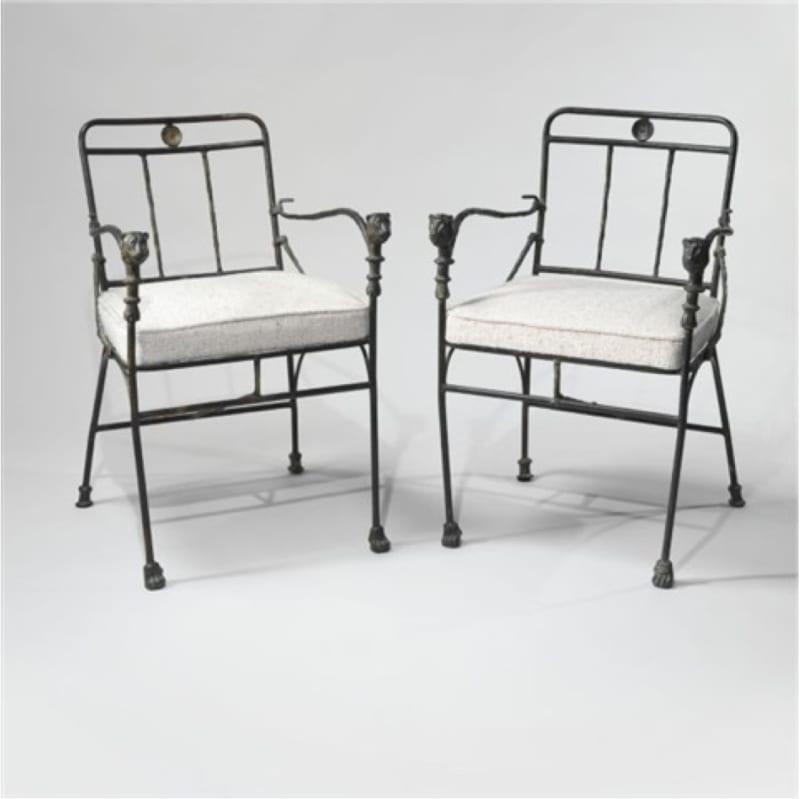Diego Giacometti 1902-1985
Diego Giacometti (1902–1985) is renowned for his poetic bronze furniture and decorative objects that blur the boundary between sculpture and design. Working alongside his brother, Alberto Giacometti, for much of his early career, Diego developed a distinctive visual language that fused natural motifs with refined structural form. His works are defined by slender lines, organic compositions, and playful references to flora and fauna — a reflection of his childhood in the Swiss Alps.
While Diego initially worked in close collaboration with Alberto, his independent practice emerged more prominently after the Second World War and especially following Alberto’s death in 1965. From this period onward, Diego focused exclusively on furniture, lighting, and sculpture, creating tactile and imaginative works that were both functional and sculptural. His later commissions for institutions such as the musée Picasso and the Fondation Maeght helped position him as one of the most important decorative artists of the 20th century.
Today, Diego Giacometti’s work is highly sought after by collectors and design institutions worldwide, appreciated for its elegance, subtle wit, and enduring craftsmanship.
Diego Giacometti was born in 1902 in Borgonovo, Switzerland, just over a year after his brother, Alberto. Raised in a creative household in the mountainous canton of Graubünden, Diego developed an early appreciation for nature, craftsmanship, and art. He studied business in Basel before relocating to Paris in 1925, where Alberto was studying sculpture with Antoine Bourdelle.
The brothers would go on to share a studio on rue Hippolyte-Maindron, collaborating closely for decades. Their early work was nearly indistinguishable in style and execution, particularly during their long-standing collaboration with interior designer Jean-Michel Frank between 1929 and 1940. Working on commissions for clients such as Nelson Rockefeller and Elsa Schiaparelli, the Giacometti brothers’ designs were introduced into the highest echelons of Parisian taste.
Diego’s first solo commission came in 1938, designing custom light fixtures for Guerlain’s headquarters on the Champs-Élysées. However, it was not until the 1960s, after Alberto’s death, that Diego’s individual style came fully into focus. Drawing on memories of rural life, he began incorporating owls, foxes, deer, trees, and vines into his bronze designs — creating lyrical, dreamlike pieces that were as much sculptural as they were functional.
In the final two decades of his life, Diego worked on major commissions for public institutions, including the musée Chagall in Nice, the musée Picasso in Paris, and the Fondation Maeght in Saint-Paul-de-Vence. His ability to transform furniture into sculpture — without sacrificing utility — set him apart within 20th-century design.
Diego Giacometti died in 1985, leaving behind a body of work that continues to resonate for its grace, originality, and sense of quiet enchantment.


